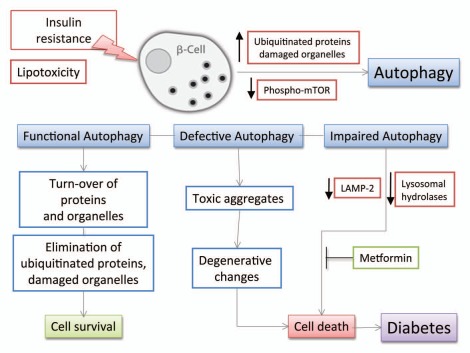Figure 4.
Schematic diagram of the effects of insulin resistance on β-cell autophagy. Various stresses caused by peripheral insulin resistance can induce polyubiquitination of proteins and accumulation of damaged organelles as cytoplasmic aggregates in pancreatic β-cells. Ubiquitinated proteins and damaged organelles, which otherwise form toxic aggregates, are effectively cleared by autophagy. Thus, autophagy can be viewed as a defense mechanism against cellular damage in β-cells. Elevated free-fatty acids also stimulate β-cell autophagy by gradual decrease in the level of phospho-mTOR under the state of insulin resistance. Interestingly, lipotoxicity induces impaired autophagy in human β-cells with reduction of LAMP-2 and lysosomal hydrolases leading to vacuole accumulation and cell death.

